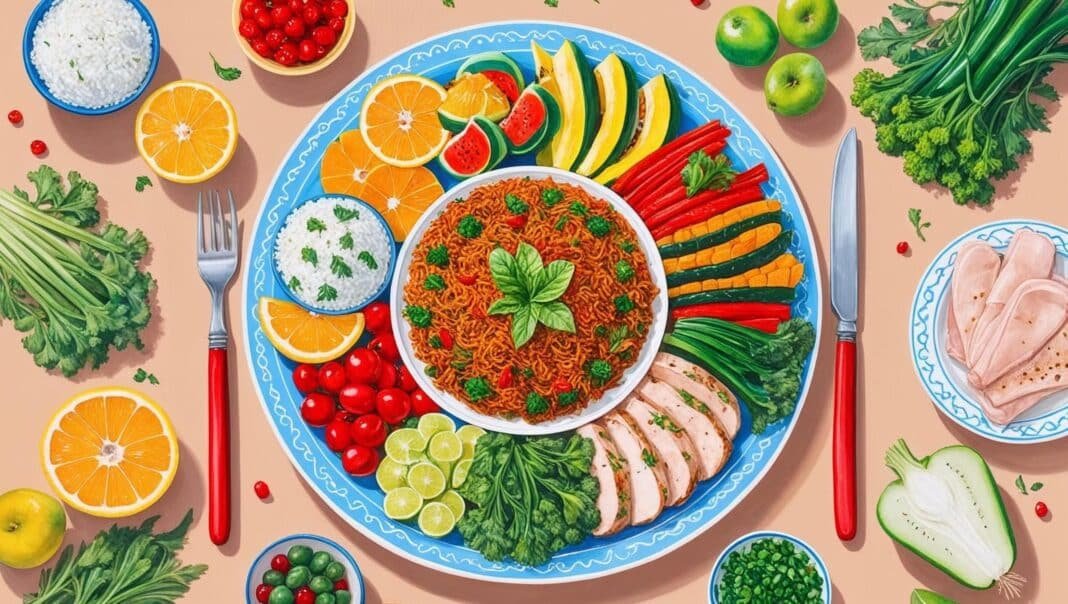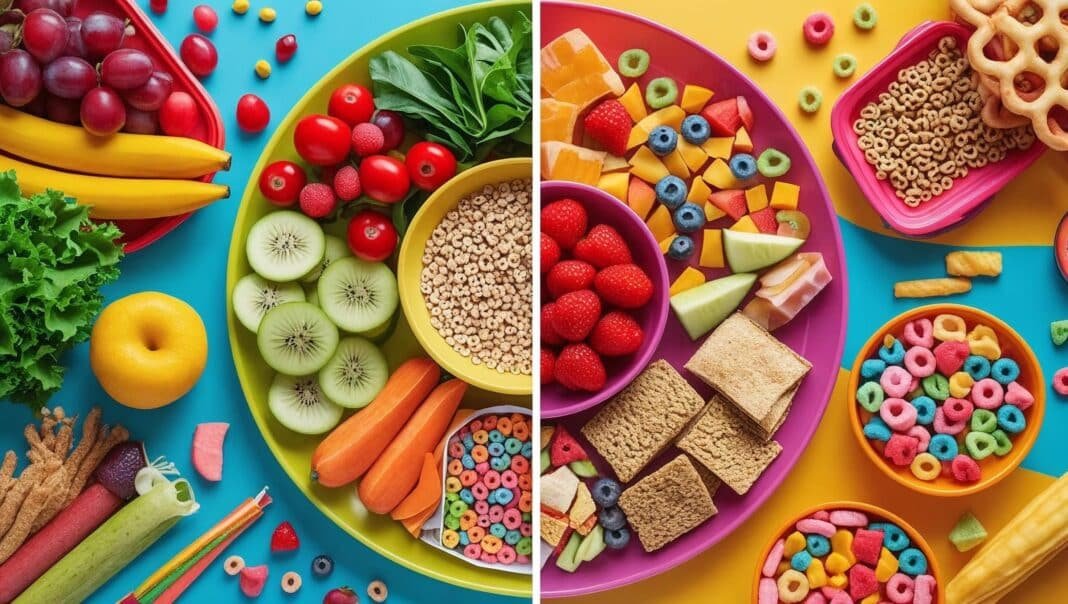Nutrition Tips for Women : Empowering women through nutrition is about much more than calories or dietary restrictions. It’s about fueling energy, supporting hormonal balance, and preparing women’s bodies for the transitions of life — from menstruation to menopause. Programs like NOURISH aim to strengthen maternal and child health through thoughtful, evidence-backed nutrition strategies. This article breaks down the science, habits, and tools that help women nourish their lives.
NOURISH: Nutrition Outreach to Understand the Sustainable Impact of the Supplemental Nutrition Assistance Program for Women, Infants, and Children
A Quasi-Experimental Trial to Explore the Impact of WIC on Maternal-Child Health.
Empowering Women Through Nutrition
On the face of it, empowering women through nutrition is about more than counting calories and controlled-diets – it’s about empowering women to live healthier, more vibrant, and fuller lives. When it comes to improving brain function, mood, state of body or preparing the body for the life stage changes like pregnancy or menopause, the nutrition takes the driving seat. This article explores key nutritional strategies just for women, backed by real science and experienced by generations of women across the globe, to make sure that every meal helps support their health.
You Are What You Eat: The Base for Women’s Health
A balanced diet starts with knowing what macronutrients - carbohydrates, proteins and fats – are. These nutrients provide the energy and raw materials for what our bodies do every day.
- Carbs are brain and muscle fuel. And sources such as whole grains and fruit provide sustained energy plus fiber.
- Proteins are required for tissue repair and normal immune functioning. Choose meats like poultry and lean beef, dairy food, legumes and soy.
- Fats, especially the healthy unsaturated fats, help with hormone balance and brain health. Both avocados and olive oil are good choices, as are nuts.
The nutritional needs of women depend upon a range of factors including, age, physical activity, menstruation, pregnancy, and menopause. For example, iron requirements rise in reproductive years to compensate for menstrual blood loss, while women in later years require more calcium and vitamin D to maintain bone health.
Whole Foods: The Ultimate Source of Nature for Ladies
Whole foods need to be the staple of any women’s diet. These include:
- High-fiber fruits and vegetables that are rich in vitamins and antioxidants that boost immune health while reducing inflammation.
- Whole grains such as oats, brown rice, and quinoa, which are important for maintaining blood sugar and good digestive function.
- Lean proteins like chicken, turkey, fish, beans and legumes, which are necessary for muscle upkeep and a boosted metabolism.
- Good Fats from nuts, seeds, and fish which support a healthy heart and improved brain function, respectively.
Whole foods are richer in nutrients because they are not processed – removing the sugars and fats that are so bad for us. They are also linked to help with weight management in women and alleviate risks for chronic problems such as heart disease and diabetes.
Water: The Silent Way to Energy and Vigor
The importance of water, particularly for busy women who are managing many roles, can be an overlooked component of health. Hydration impacts:
- Vigour levels: Dehydrated candles plenty of people and soothes your creativity.
- Gut health: Proper fluid consumption and healthy digestion go hand in hand.
- Skin: Skin that is adequately hydrated looks plump and radiant.
Women are recommended to drink 8–10 glasses (2–2.5 litres) of water each day, though needs may be higher depending on one’s level of physical activity and the temperature of the environment. Including water-rich foods like cucumbers, melons and soups further bolsters daily water consumption.
Balanced Macronutrients: Nourishing A Healthy Body
Balancing macronutrients is important. For a woman, there shouldn’t be too significant an emphasis on one group of food small and large at cost of other.
Your average daily macro distribution would probably look something like:
- Carbs: 45–65% of daily calories
- Proteins: 10–35% of daily calories There are four calories in every gram of proteins.
- Fats: 20-35% of total daily calories.
Female athletes and those doing heavy physical work may need more of the building blocks that protein and carbs can provide for the specifications of their sport or labor. On the other hand sedentary people might need a higher % of healthy fats and fibrous veggies to keep them satiated, and prevent blood sugar issue!
Micronutrients: Small Agents with Big Effects
Vitamins and minerals (micronutrients) are essential for many physiological processes. Women especially should look out for the following:
- Iron: Important for the transport of oxygen in the blood, deficiency is rampant in menstruating women. Red meat, spinach and lentils are good sources.
- Calcium: Essential for bone strength. The requirement rises with age and is particularly critical following menopause.
- Vitamin D: Helps the body absorb calcium; immune support. Sunlight, fortified foods and fatty fish are principle sources.
- Folate (Vitamin B9): Needed for the prevention of birth defects during pregnancy and for cell growth. Folate Folate is found in leafy greens, legumes, and citrus fruits.
- Magnesium and Potassium: Help control muscle and nerve functions and balance fluids in the body.
Women who don’t get enough micronutrients are at risk for fatigue, brittle bones, weakened immunity, and reproductive problems.
Meal Planning and Prepping: the Secret to Your Purpose of Eating
Meal planning can cut down decision fatigue and keep healthy eating habits on track. Effective strategies include:
- Weeknight planning: Plan meals for the week to avoid last-minute takeout.
- Batch cooking: Make multiple servings of grains, proteins and chopped vegetables to use in other meals.
- Portion control: Use containers to portion out meals for the correct serving sizes, and prevent overeating.
Prepping meals can be a time-saver and lesson dependency on fast foods and junk snack foods. Calories, nutrients and personal health goals are now at our fingertips!
Healthful Snacking: Fuel Between Meals Without Guilt
Snacking doesn’t have to be a dietary disaster. Smart snacking is beneficial to that, it keeps energy levels high, curbs hunger, and avoids overeating when meal time arrives. Good wholesome snacks are:
- Protein: Almonds or walnuts for some protein and good fats
- wood-fired greek yogurt with fresh berries for calcium and antioxidants
- Apple slices smothered in peanut butter to get your fiber in and energy levels held steady
- Whole grain crackers with hummus for a combination of complex carbohydrates and protein
Opt for fiber- and protein-packed snacks to stave off hunger and maintain consistent blood sugar levels.
Nutrition Through Life Stages
Women’s nutritional needs change through the phases of life:
- Adolescence: Growth spurts and menstruation = Iron, calcium, and protein needs going up.
- Reproductive: Pregnancy and lactation necessitate higher caloric, protein, folate, and iron intake.
- Menopause and beyond: Bone loss quickens, requiring additional calcium, vitamin D and magnesium; metabolism slows, so calorie needs might drop.
Knowing this information helps women to personalize their diets for optimal health and vitality at every age and stage.
Nutrition Traps to Look Out For
Even with the best of intentions, many women fall into dieting traps that can lead to weight loss and other health problems:
- Skipping meals, especially breakfast, can slow metabolism and lead to overeating later.
- There is the risk of an excessive consumption of sugar as a result of the consumption of low-fat or “diet” foods.
- Undereating despite realistic body image goals can cause nutrient deficiencies and menstrual irregularities.
Instead, women should concentrate on feeding — not starving — their bodies. Self-care thinking as opposed to self-punishment mentality is a more lasting way to make health choices.
SO 2 Cultural and Social Factors of Food Habits
What we learned from our family and cultural traditions, our family’s habits and the social expectations of us as women greatly influence our relationship with food. In certain societies, women have the least or last to eat and this perhaps disrupts nutritional inputs. These patterns can be disrupted by:
- Nutrition self-awareness
- Food education on the other hand, healthy choices.
- Social support from family, peers, and physicians
Through sharing the responsibilities of preparing food and inclusive health education, society can create an environment in which female nutrition is not a second-best priority.
Conclusion For Nutrition Tips for Women
Helping women to fuel themselves is an essential step towards helping women to flourish – so they can feel great and do great. Alongside learning about macronutrients and micronutrients, whole foods, hydration, meal timing, and snacks, women can create a base of strength and health that will carry them through any age. Food is not just fuel; it is self-respect and self-care and greatness.
When women are well nourished, they are more able to lead, to take care of others and to meet life’s challenges with vibrancy and confidence.
FAQs
What are the best foods for women?
Basic building blocks include fruits, vegetables, whole grains, lean proteins and healthy fats. They contain essential nutrients which are beneficial for everything from bone to hormones.
How does hydration affect levels of energy?
Staying hydrated is the way to keep your energy consistent, support cognitive function, and avoid fatigue. Even slight dehydration can affect athletic and cognitive ability.
What are the functions of micronutrients in a woman article’s diet?
Iron, calcium, vitamin D and folate, in addition to those mentioned above, are micronutrients that are essential to bone health, immune function, reproductive capacity and the metabolism of energy.
How can women make eating well easier?
Weekly meal planning, batch cooking, eating nutrient-dense snacks—these are a few ways that make healthy eating less of a chore (and less vulnerable to dietary missteps) for women.
Should women’s nutrition change at different stages of life?
Yes. Throughout your life your nutritional needs fluctuate from adolescence, pregnancy, menopause, and into old age. Modulating intake of important nutrients is useful to accommodate the demands of each stage.
Reference
Academy of Nutrition and Dietetics
Stay updated with all the latest news and insights – News Of US






